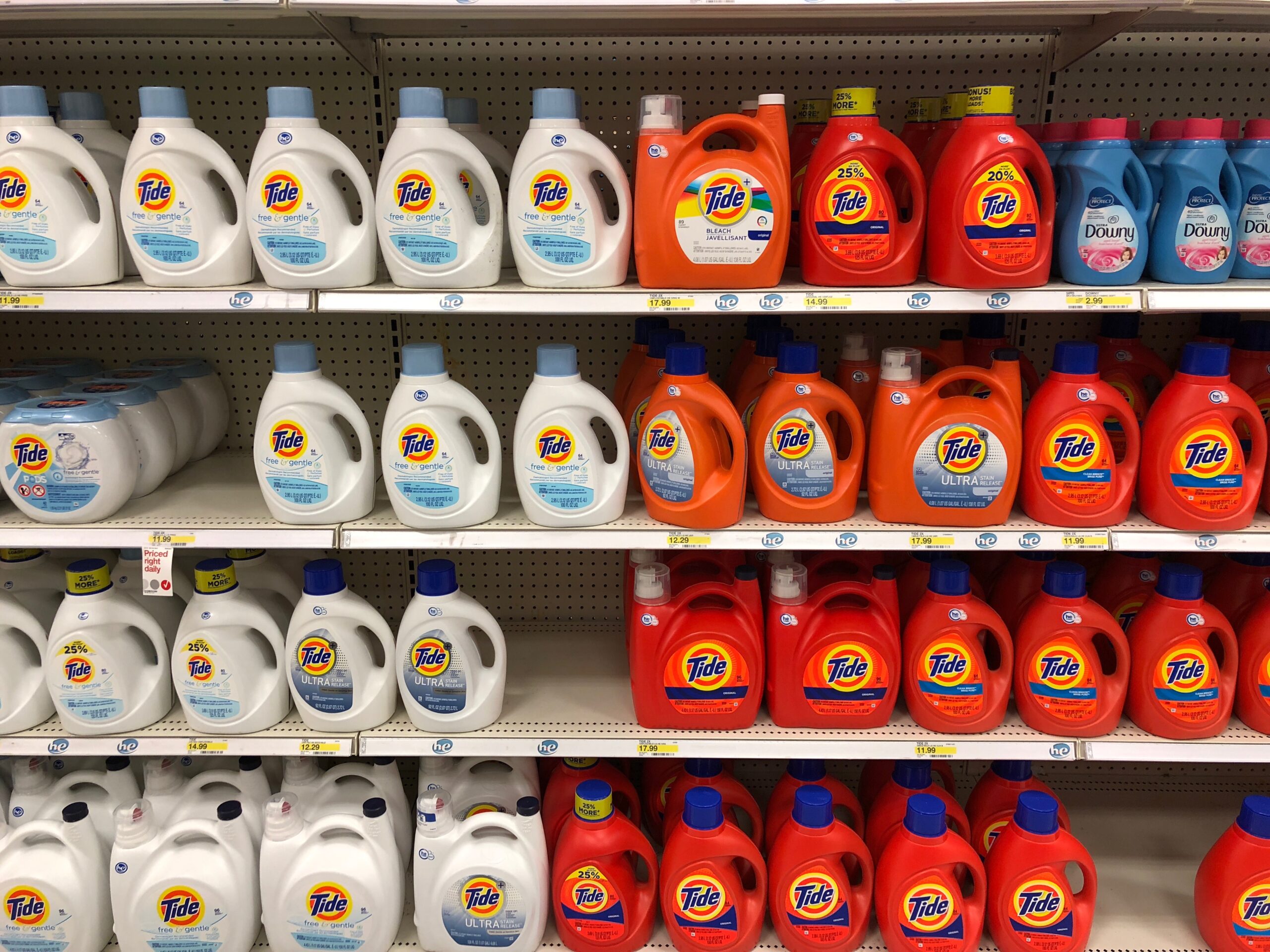
When it comes to saving money, one of the best things you can do is to use less of the products you do buy. Using less means the product lasts longer, which means you buy replacements and refills less often. We can use less of many products and still achieve the same (or better) results. Here are ten things that you can easily use less of without giving up performance.
Laundry Detergent:
Detergents have come a long way in recent years, yet most people and manufacturers still think you have to use a lot to get good results. You can use less than the recommended amount of detergent and still get clean clothes. In fact, using less detergent is good for your clothes and the washing machine. Too much soap causes build up on your clothes and can gunk up the works of your machine (or septic tank, if you have one). Try using half as much as normal in a couple of loads and then adjust accordingly.
Dryer Sheets:
You can cut a dryer sheet in half or even in quarters and still get the same results as with a whole sheet. Using less leaves less build up on your clothes and less build up in your dryer.
Shampoo/Conditioner:
If you ever read the directions on a shampoo bottle, the instructions usually read, “Lather, rinse, repeat.” Unless your hair is filthy, you can skip the repeat part of the program. You can also use far less than the recommended amount and still get great results. In fact, using less may actually make your hair cleaner because you won’t have so much build up on your hair. You don’t have to shampoo your hair every day, either. A couple of times per week is enough for most people.
Dishwasher Detergent:
Like laundry detergents, dishwasher detergents (and machines) have improved in recent years. Chances are you don’t have to fill the detergent cup to the brim to get clean dishes. Try filling it only half full and gauging the results.
Toothpaste:
You don’t have to use the big, curly stripe shown on the toothpaste commercials to get clean teeth. For most people, an amount slightly larger than a pea is plenty to freshen breath and remove plaque.
Deodorant:
On deodorant commercials, you often see the actor swiping the stick over their skin five or six times. In real life, one good swipe is usually enough to do the job, unless you are going to be sweating profusely.
Moisturizer:
You don’t have to fill your hand with a big glob of moisturizer. In most cases, a little blob will soften your skin. You just need enough to lightly cover your skin; you don’t have to soak your skin.
Juice:
Most juice is so full of sugar that you can easily dilute it with water and it will still taste good. Try mixing a glass of half juice and half water to begin with. If it’s too weak, add in a little more juice. Conversely, if it still tastes too sweet, add a bit more water. You can make a bottle of juice last twice as long as normal or longer.
Cleansers:
You don’t have to soak the mirror with glass cleaner or flood the toilet with cleanser to get a clean house. In general, a little spray of cleanser applied with a rag or sponge will clean a large area. This applies to furniture polish, window cleaner, toilet cleaner, and all purpose cleaners. About the only time that extra cleanser really helps is if you have a serious stain or built up dirt. Even then, applying less cleanser but letting it soak in for a few minutes will probably do the job.
Perfume/Body spray:
A single spritz of most perfumes or body sprays is usually enough to give you the scent you want. Multiple sprays are not only wasteful, they can turn people off because the fragrance becomes too strong. I doubt that in real life you’d want to be close to the actor in the commercial who sprays himself for a solid thirty seconds with body spray.
This list is just a starting point. Try experimenting with other products that you use to see if you can use less and still get good results. The point is to be aware of what you use and don’t take the manufacturer’s directions at face value. After all, the manufacturer wants you to buy more product so they’re likely to encourage you to use more than you really need. You’ll probably find that there are many other products that you can use less of and save even more money.
Read More:
Want To Save More – Take the 52 Week Money Challenge
Twelve Items to Unplug Now To See A Drastic Change In Your Energy Bill
Save An Extra $3,339.75 This Year With The 365 Day Nickel Challenge

